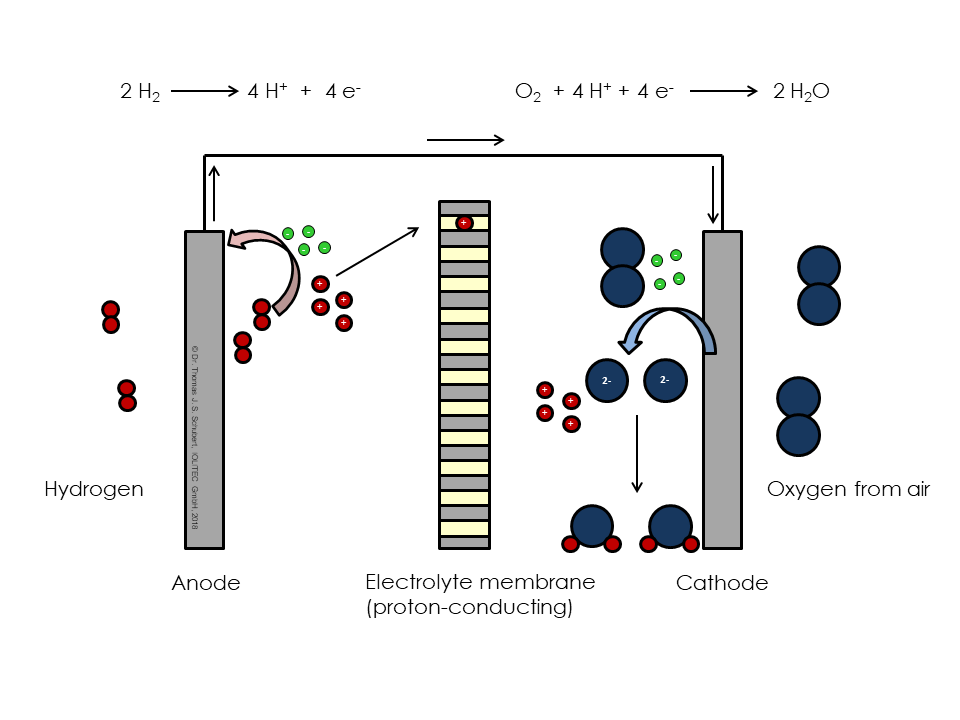Electrolytes, Membranes- and Electrode Materials for Proton-Exchange-Membrane Fuel Cells (PEM-FCs)
In a proton exchange membrane fuel cell (PEM-FC) the controlled reaction of Hydrogen and Oxygen into water is performed to convert the released energy directly into electricity. Typical membrane Polymers (ionomers) are based on a PTFE-backbone, having sulfonic-acid group incorporated in the side chains. The necessary proton-conductivity can only be achieved if the material is moistened with a sufficient amount of water. As a consequence, because of the vapor pressure of water the upper operation temperature is limited to 80°C. Novel concepts are using thus e.g. polybenzimidazole (PBI) as membrane material, which is forming a necessary matrix for proton conductive phosphoric acid.

Fig. 1. Proton-Exchange-Membrane Fuel Cell (PEM-FC).
Some ionic liquids are having a sufficient to good proton conductivity (IOLILyte FCE-series). In combination with their poor vapor pressure, they are interesting alternatives for phosphoric acid.
Another example of using ionic liquids in fuel cell technology is to polymerize suitable ionic liquids to generate novel types of ionomers. Those might be interesting alternatives for commonly used proton conductive membrane materials. In particular of interest are „Task Specific Ionic Liquids“ (TSILs), bearing the necessary functionalities in their side chains (IOLILyte FCE-series):
The design of the electrodes used in fuel cells is also an aspect of current R&D. Common material combinations are carbon black with metal- or noble metal catalysts.
In this context, the use of graphene or CNTs in combination with our metal-nanoparticles might also be of interest for actual applied research in this field (IOLILyte FCM-series).
Text: Dr. Thomas J. S. Schubert, IOLITEC GmbH, 2015.
[IV A]
